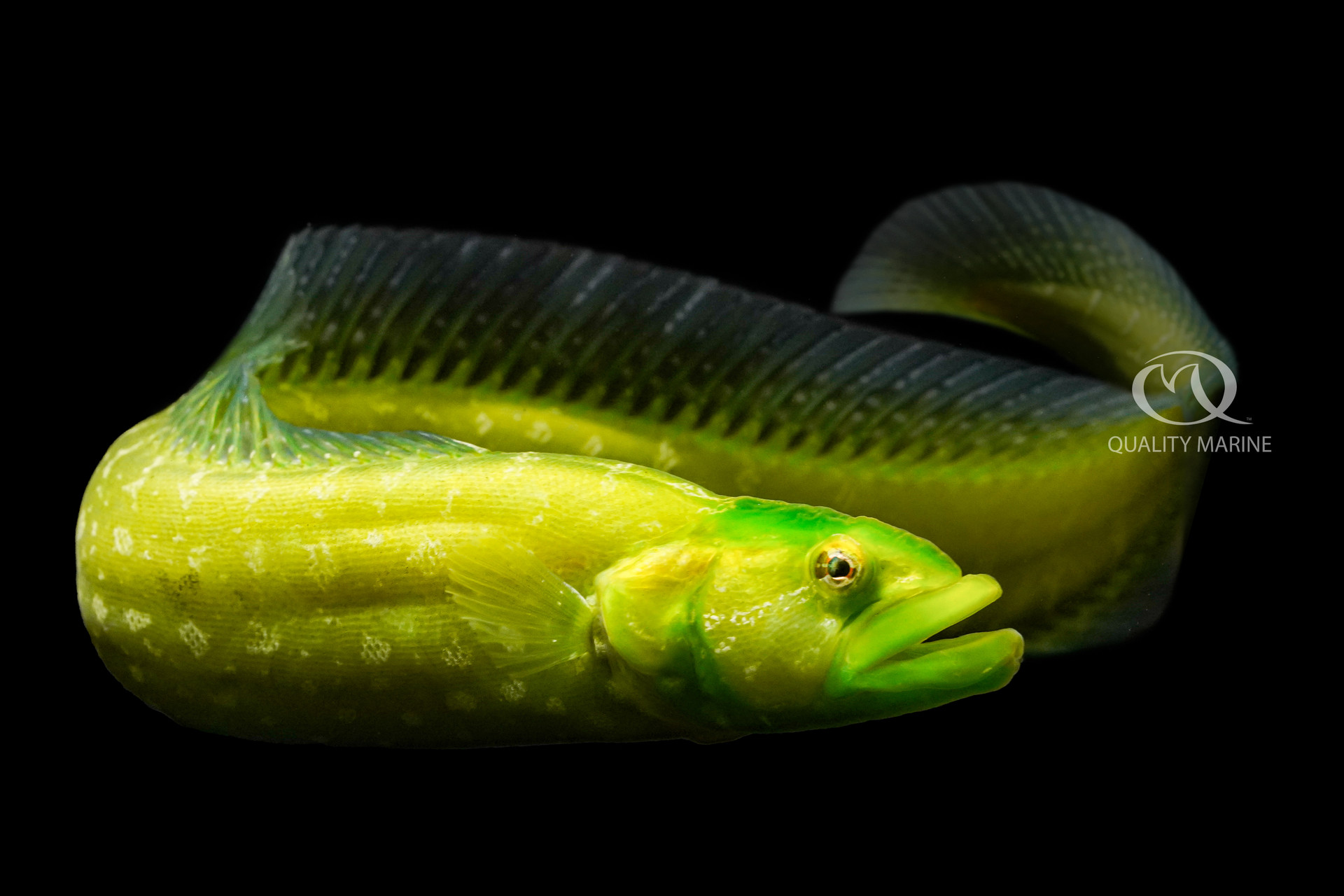Oddball Alert - Green Wolf Eel

Congrogadus subducens is possibly the most often misidentified / misnamed fish in the hobby. It has quite a few common names including Carpet Conger, Daggerfish, Eared Eel, Launce, Lurking Machete (my favorite), Mud Blenny, Green Eel Perch, Ocellated Eel Blenny and the most popular two: Carpet Eel Blenny and Green Wolf Eel. Interestingly, this fish is neither an eel nor a Blenny, but a Pseudochromis, and a very interesting one at that.
In the wild, these fish are found in the shallow coastal waters of the tropical Indo-Pacific, generally in less than 30 feet of water. They are usually associated with rocky outcrops and coral rubble where there are ample places to hide, they are also frequently found in the crevices of coral reefs. This species is eurohaline, and thus is also not uncommon in brackish environments as well. Generally they are green, or brown or some combination of the two, they can change coloration fairly abruptly to blend into their environment better. They are omnivorous (eat almost anything) ambush hunters, eating any fish small enough to be swallowed and many motile (moving) invertebrates.
While the Green Wolf Eel does attain a fairly large size, it is still contextually a very small “eel.” With a maximum adult size of just under 18 inches, this fish is one that could be kept long term in an aquarium as small as 125 gallons or so. Many of the commonly seen true eels available to the home hobbyist can get 2 or 3 times this size. While these fish have been bred in captivity by hobbyists in Germany, there is no commercial availability of aquacultured specimens at this point, and little information available on the success of rearing the fry.
Congrogadus subducens is the largest pseudochromis available, and has an appetite to match. It does best on infrequent, very large meals, which would mimic its wild meal distribution. They generally take thawed marine meaty foods very well, though their initial shyness and nocturnal nature can be challenging in getting them started. We suggest feeding them a mix of these foods, appropriate to their size. Krill, mussels, small siversides are great when the animal is small, while larger meals are obviously more relevant as they grow. They will very quickly overcome their shyness when the realize you are a food source. A feeding stick can be a useful too to get them started on prepared foods. As an aside, Wolf Eels are apt hunters and can remove hermit crabs and snails from their shells; shrimp (yes, even cleaner shrimp) are a preferred food source, and small fish that can be caught, will be. While the Eels are quite peaceful with larger fish and are very unlikely to bother corals in any way, don't trust them with anything small enough to fit in their mouth and plan on frequently restocking your clean up crew.
If you are looking for an oddball, the Green Wolf is highly recommended. Like most pseudochromis they are very hardy and well suited to captivity. They take to prepared foods very easily. Interesting and beautiful, they have many of the benefits of any other “Eel” but will generally be more visible once acclimated. Combined with a interesting green coloration that you just don't see that often, this makes for one spectacular addition to your aquarium of bigger fish.